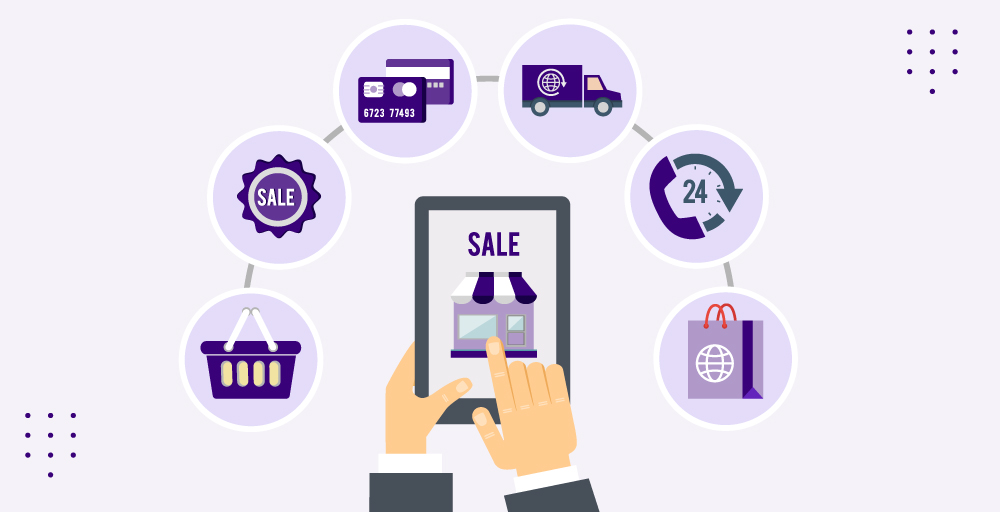
Meeting customers’ expectations is a challenge for any organization. Business can drag down their revenue and waste their resource if they aren’t able to predict customer expectations. Over time, customer expectations keep on changing, exactly the way fashion trends change.
Have you ever thought about whether your organization has been able to meet all your customer’s expectations? Do you know what your customers expect from you?
Perhaps answers to all these questions will be covered in this post.
In this blog, we will discuss the meaning of customer expectations, their types, and how to ensure customer satisfaction.
What Are Customer Expectations?
In simple terms, customer expectation means “the customer desires or predictions related to any product or service in their mind.” The expectations customers set are usually based on their previous experience, cultural norms, and social influences. It differs from individual to individual.
Before deciding to purchase a product, any individual will gather information regarding the product and gain insights about the product’s quality. The expectation of the customer often decides their decision to purchase the product or service.
The other factor that may highly affect customer purchase decisions is peer groups. For example, If a friend recommends a product, then an individual is more likely to have high expectations of the product.
Several Factors Influence Customer Expectations
There are a multitude of factors influencing customer expectations towards a product or a service. Some of the factors that significantly contribute to developing customer expectations are as follows:
- Product or Service Quality
Quality is the core factor in both the product and service sectors. Quality is determined by the product’s performance, durability, design, features included, etc. These quality metrics add value to the product.
A product needs to have all these quality metrics to satisfy customers. It’s because customers, after analyzing the product or service on various metrics, finally set an expectation and decide to purchase a particular product.
For example, if you have purchased a new laptop from a particular brand and found it extremely slow, you will never purchase it again from the same brand.
- Brand Reputation
Brand reputation is the reputation of the brand in people’s minds, which is generated through past interactions with the brand or through the opinions of others.
The reputation of a brand is shaped by its consistency over time, its social responsibility, and its ranking in the industry. It is also shaped by the endorsements and partnerships that the brand has developed over time.
Brands that are known for offering excellent service have better brand reputations than others.
- Price
Price plays a significant role in determining the purchasing decision of the individual. Customers have higher expectations for the brands that have higher prices. They expect the brand to have the best quality product with many features and provide a premium feeling overall.
Likewise, if the competitor offers a lower price for the same product, then the customer expects to have a similar quality for a low price, leading to pressure on businesses.
The business also implements psychological pricing strategies such as odd pricing (e.g., $1,999) and tiered pricing (e.g., basic, standard) that develop certain expectations towards the brand.
For example, an expensive BMW car is expected to have better features than an average Hyundai.
- Speed of Delivery
Customer expectations on speed delivery depend upon the brand category. Companies that offer customized products are generally perceived to take longer delivery time.
Similarly, during the festive seasons, the customer expects the speed of delivery time to become slow. Another factor that largely affects the speed of delivery is location. If the location between a customer and delivery units is large, the customer will expect the brand to deliver late.
However, platforms such as Amazon and Alibaba have raised delivery standards by offering faster delivery services, so organizations with similar services are expected to have faster delivery times.
- Value of money
The value of money is mostly created through the level of satisfaction that a product can offer. The higher the price, the higher the perceived value, and vice versa.
Peers’ recommendations and online customer reviews can influence the perception of value. Likewise, customers compare similar products offered by different brands in terms of price and features before deciding which one to buy.
Top 5 Types of Customer Expectations
Every business goal is to match customer expectations since it determines their sales. Customers have various expectations of brands; among them, some of the identifiable expectations are as follows:
- Explicit Expectations
Explicit expectations are the basic expectations that customers have before purchasing a product. Such expectations include aspects such as price, quality, delivery time, and more. These expectations are usually directly communicated and are clear and specific.
For example, if a customer has to purchase a phone, then they may come to your shop and ask for a phone with specific features and within a certain price range.
- Implicit Expectations
Implicit expectations are the assumptions that a customer has about a product or a service based on other brands that sell similar products or services. These expectations are not directly communicated but may be subconscious and will influence customer purchasing behavior.
For example, a customer always expects a hotel room to be clean and fancy.
- Interpersonal Expectations
Interpersonal expectations mean the expectations that a customer has while having interactions between the customer and your team members. These interactions are expected to be friendly, helpful, attentive, professional, and empathic, irrespective of how they occur, either via phone, live chat, or in person.
For example, companies can provide better interpersonal expectations for their prospects by including a creative voicemail greeting on their voicemail messages.
- Digital Expectations
These are expectations of the customers they have when interacting with agents through digital platforms such as websites, emails, social media, etc. It also includes engaging and relevant content. Usually, customers expect interaction through these platforms to be user-friendly, seamless, and responsive.
- Dynamic Performance Expectations
It refers to the change in the customer’s expectation of a product or service with time. Here, the customer expects your product performance to be more user-friendly, flexible, and adaptable with time to meet the customer’s expectations.
Likewise, the expectation is also based on evolving the product or service with the emerging market opportunities and challenges.
Customer Expectations to Ensure Customer Satisfaction
Customer satisfaction is the outcome of fulfilling customer expectations. Therefore, it is necessary to be aware of the expectations of customers and make strategies accordingly.
Some ways to meet customer expectations are:
- Find Out What Your Customers Want
It is a challenging task for brands to recognize the exact expectations of individuals. So, why not ask directly? One can conduct a survey through Google Forms, Jotform Survey Maker or social media to know customer’s needs.
Likewise, they can listen to customer feedback and analyze purchasing patterns, which can bring insights into what customers want.
- Determine How Important Each Expectation Is
Since there are a lot of expectations, not all expectations need to be prioritized. You should prioritize them based on their importance. Select the most practical and significant expectation and work on it to bring it into reality to ensure customer satisfaction.
- Be Transparent
A transparent business can easily build the trust and confidence of customers. Being transparent means providing clear and true information about products, prices, terms, conditions, and delivery times. Through transparency, one can develop a positive relationship between the customer and the business, resulting in customer satisfaction.
- Provide a Consistent Experience
Consistency helps in meeting customer satisfaction. Customers expect consistent experience in all the services provided by the businesses. A consistent experience develops trust, which will ultimately enhance customer retention.
- Handle Complaints Quickly and Politely.
Businesses must handle customer concerns immediately to retain customer satisfaction. You must ensure that you have an efficient and capable staff to handle customers’ complaints in a timely and polite manner. By addressing the complaints responsively, the brand can turn negative experiences into positive ones.
Conclusion
In conclusion, understanding customer expectations is the key to ensuring customer satisfaction. To meet customer satisfaction, businesses must match these five expectations: implicit, explicit, interpersonal, digital, and dynamic performance.
Also, by knowing what customers want, the business can prioritize activities and handle complaints efficiently while being transparent and consistent.
With the points covered in this post, you can easily turn your customer expectations into reality and ultimately ensure customer satisfaction.
Featured Image by Patrick Tomasso on Unsplash
The post 5 Things Customers Expect from Strong Customer Service appeared first on noupe.
